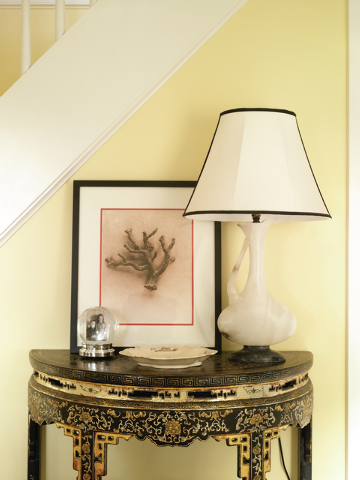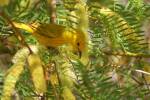Shades of distinction will bring out lamps’ potential
The other day I was lamp shopping at one of my favorite bargain stores when I spotted a pair of antique-bronze-finished metal-based lamps. A quick flip of the price tag proved they were a score — only $29.99 each — especially because they were dead-ringers for ones I had seen days before in a fancy decorator showroom.
The problem was their shades. Poorly constructed with a lumpy trim tacked around the top and bottom edges, the shades cheapened the bases the same way poor quality shoes do an expensive outfit.
The lamps’ bright potential was clearly being hidden by the shades, so I bought them.
Now my hunt for the right shades began. A search online proved to be fruitful, but there was no one-stop site where I could find a broad range of shapes, fabrics and colors.
Restoration Hardware ($14-$110, www.restorationhardware.com) has a decent but small offering of tasteful, tailored shades in linen and silk that are meant to coordinate with their bases (they make it easy by recommending exactly which shade you should pair with each of their bases) but would work on any similarly sized base.
Lux Fine Lampshades ($56-$189, www.luxlampshades.com) offers more classic Empire box pleated, smocked silk and shirred silk shades, including a collection from the decorator Bunny Williams.
Lamps Plus ($9.99-$299, www.lampsplus.com) has arguably the biggest selection and its search tool helps to narrow down choices by filtering for style, type, price and size, but to buy lampshades online you have to be confident and prepared.
Most websites provide tips on figuring out what size and shape shade is best for your lamp, but sales associate Ken Henderlong of Oriental Lamp Shade Co. in New York dismisses such advice.
“There are no hard and fast rules,” Henderlong said. “To say that a shade has to be about three-fourths the height of a lamp’s base is an old formula.”
Any given lamp can take more than one style shade, and shade heights may vary by several inches. For example, a modern-looking drum shade is going to be shorter than a more traditional Empire shade — but both could work equally well.
Before you begin to shade shop, decide what style you want not only for the lamp, but also for the design of the room — a cylinder drum shade immediately says ’60s, while a Pembroke shade (sometimes called Euro) is very proper and traditional.
You also need to take into account where the lamp will sit and what other lamps and shades are in the room. It’s OK to have different-shaped lampshades in a room, but there has to be some unifying trait among them, such as color or fabric.
Once you make your stylistic decisions, you need two measurements: the height of the lamp base (excluding the socket and the harp holder) and the lamp’s widest point. That way you will be able to know proportionately what size shade you need.
Basically, you want the diameter of the bottom of the shade to be a couple of inches bigger than the widest part of your base; you want the shade to cover the harp and the socket; and you want the bottom of the shade to rest just above the top of the base. If you let the shade hang too low on the base, it will look off the way a too-long hemline does on a dress.
Truly the best way to buy a lampshade is to take the base to a local shade store so you can try lots of shades on at once and you have the benefit of a trained and knowledgeable salesperson.
So with my lamps in tow I sought out Henderlong’s expert opinion. He was incredibly patient while I pulled a Goldilocks routine: One shade was too small, another too big and another too mod. With his guidance, I finally ended up settling on a “just right” classic Empire box-pleated model that dressed up my bargain base.
The shades weren’t inexpensive (about $102 each) and I had to buy new harps ($4 each) so that the shade hit the base at the proportionately correct spot. I made one more change: I asked to have the lamps’ electrical wires replaced with silk-wrapped cords ($20 for rewiring and $2 per foot for the cord), which gives the lamps an even more upscale look.
I debated using a bright cord like the one on Ilse Crawford’s Studiolise task lamp (check out the fantastic array of cloth-covered electrical wire at www.colorcord.com), but I settled on chocolate brown. All told, I spent an additional $136 on each lamp, which still makes them a near-steal.
Mayhew, a “Today” show style expert and former magazine editor, is the author of “Flip! for Decorating.”




























